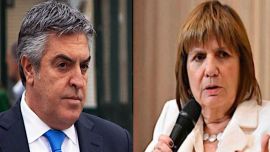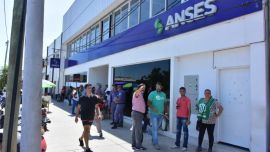Argentina’s renewed strategy to build up its stockpile of dollars at the Central Bank faced a setback Wednesday as the peso extended losses amid faster inflation over 100 percent.
Soybean exporters, who are temporarily allowed to sell dollars at a rate of 300 pesos per dollar compared to the official rate at 218, didn’t sell a single greenback Wednesday, the first day of no such sales since the policy started last week.
Inflation data published last Friday showed prices rose more than expected to an annual pace of 104 percent. That’s spurred a sell-off this week in the commonly-used parallel peso exchange rate, which closed Wednesday at 433 pesos per dollar and accumulated a loss of 6.7 percent so far this week.
As the parallel rate charges ahead, soybean exporters like Juan Ouwerkerk see the incentive dwindling for shipping abroad now at a fixed rate as many expect a currency devaluation to happen this year or next when a new government takes over. Ballooning uncertainty on the economy and a rumour mill of policy changes is making many exporters wait and see, Ouwerkerk added.
“The currency issues in the last two or three days make it so that whoever doesn’t need to sell holds onto their grain,” said Ouwerkerk, president of farm cooperative Alfa in southern Buenos Aires Province. “The exporters who are well off can wait until December when there will undoubtedly be a devaluation.”
Argentina relaunched the so-called “soy dollar” exporters last week as farmers are suffering through the worst drought on record that’s expected to push the economy deeper into recession this year. The policy brought in US$961 million in the first four days of operation. But that pace began to slow on Tuesday and came to a complete halt on Wednesday, according to PR Corredores de Cambio.
Soybean farmers can sell their dollars at this differential exchange rate until May 31, when this programme ends. The government said it expects the measure to boost the Central Bank’s net cash reserves by US$5 billion on top of another US$4 billion of other agricultural products.
The Central Bank’s razor thin net reserves amounted to just US$2.7 billion at the end of March, according to estimates by Argentine consulting firm FMyA. In Argentina, exporters must sell dollars they receive from sales abroad to the Central Bank for pesos, making commodity exports a key source of hard currency.
Farmers had sold just 730,000 metric tons of soy through Tuesday since the start of the programme.
“It’s been pretty lethargic so far,” said Eugenio Irazuegui, head of research at grain brokerage Enrique Zeni in Rosario.
related news
by Ignacio Olivera Doll & Jonathan Gilbert, Bloomberg






















Comments